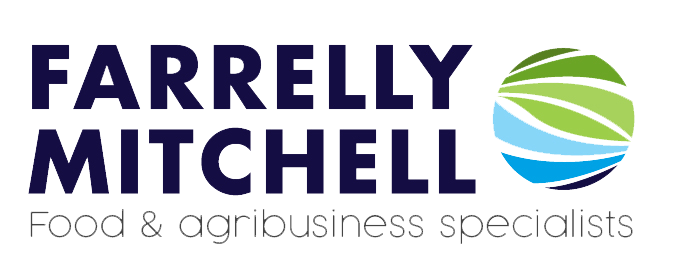The range of non-dairy based alternatives to milk is expanding, providing consumers with more and more choices which now include potato and banana milk alongside other established diary alternatives produced from nuts, soy, and oats. According to a British retailer, Waitrose potato milk is set to be one of the biggest new food trends of 2022.
Popular alternatives to milk
Strong growth driven by environmental and health concerns means that the plant-based milk alternatives market now accounts for around 10% of the global “milk” market. The market is expected to reach nearly US$ 44.78 billion by 2027 with a rate of growth of 10% p.a. over the next five years. This growth is leading to increased investment and innovation within the sector, resulting in the production of new milk substitutes, using new technologically advanced methods that have driven the growth of the milk alternatives market. The most popular plant-based milk alternative type in North America is currently almond (which occupies almost two-thirds of the market), followed by oat (the fastest-growing product type) and soy.
Many choose non-dairy options for sustainability reasons, as well as health concerns. Mintel data from April 2021 reveals that the use of plant-based milk in the UK is at an all-time high with a usage rate of 32%, up from 25% in 2019, and a usage rate of 44% among millennials.
In terms of the nutritional profile, many commercially available milk alternatives do not compare favourably with cow’s milk. Cow’s milk has a higher protein content and quality compared with most of these products. Many plant-based milk products are also not without their environmental downsides both in terms of their environmental impact and nutritional profiles, so are their more sustainable alternatives?
The environmental issues with current dairy alternatives
The cultivation of almonds for alternative milk production is growing across the globe, but much of global production (80%) is centred in California, however, they are a particularly water-intensive crop and this is putting increased pressure on already stretched water supplies. The New York Times has reported that it can take as much as 15 gallons to grow just 16 almonds.
Critics of almond milk state that the nutritional benefits of almonds do not justify the damage almond growth causes to the environment. The distance from which many alternative milk ingredients such as soybeans and almonds are transported also adds to the environmental impact of the product. This is leading some to look for other more sustainable options.
Potato and banana milk explained
Since February 2022 UK supermarket Waitrose has been selling potato milk produced by a Swedish brand called DUG, owned by start-up Veg of Lund— from February 2022. DUG is a blend, consisting of potato (6%), water, and rapeseed oil, along with vitamins, flavouring and additives, including pea protein and chicory fibre. DUG claims to be the most sustainable alternative to dairy on the market and research appears to back up those claims.
In addition, banana milk has been commercially available for several years, for example, Bananawave was launched in 2013. Banana milk can also be made at home, which may be a factor inhibiting commercial products. It is also often purchased as a complement to cow’s milk, or other alternative milk products.
How do potato and banana milks compare?
Potato milk has some sustainability advantages over nuts, soyabean and other non-cow milk sources. Unlike notoriously thirsty almonds, potatoes require less water. This would be especially true in Europe and elsewhere where potatoes are already widely grown.
Before the arrival of potato milk, almond milk had the lowest carbon footprint of alternative milk, at 0.7 kg CO2e/kg. This compares with DUG Original which has a carbon footprint of 0.27 kg CO2e/kg, while DUG Barista and DUG Unsweetened both have carbon footprints of 0.31 CO2e/kg. Although as a crop potatoes are often irrigated, DUG claims that in terms of water use potatoes rank somewhere in the “middle of the pack” as compared to other dairy alternatives.
According to DUG’s data, potatoes need 56 times less water than almonds growing in the same amount of acreage. They claim that growing potatoes is about twice as efficient as growing oats. This could lead to potatoes becoming a rising star amongst milk alternatives and could lead to new opportunities for potato farmers to supply this market.
Bananas are also a widely grown crop but are often flown into western countries leading to increased GHG emissions. Banana production also involves heavy use of pesticides and banana plantations are often responsible for numerous types of pollution affecting water, soil and air and can cause a variety of health issues for local people.
How are consumers likely to respond?
Consumers now have a wider range of choices than ever. All crop production has some impact on the environment, but it is clear that milk alternatives have differing impacts and offer a range of different nutritional profiles. Price will also remain a crucial factor, growing food price inflation and economic hardship will also impact consumer choices. Dairy alternatives can be up to twice the price of traditional milk due to more expensive blending, bottling, and packaging. Consumers looking to reduce their environmental impact need to consider where and how ingredients are produced as much as what the product is made from.
Uncovering trends and investment potentials
At Farrelly Mitchell, we offer tailored solutions to clients throughout the food industry, helping them to improve their operations and achieve sustainable growth. Our experts deliver bespoke market intelligence and insights to businesses across the dairy, livestock, poultry, and crops industries, providing actionable insights into emerging trends and designing strategies to seize opportunities. In particular, we offer deep insights into growing trends such alternative proteins and novel food ingredients, and how customers are interacting with new product at the retail level.
If you would like help uncovering emerging trends and navigating complex market forces, talk to our team today.











